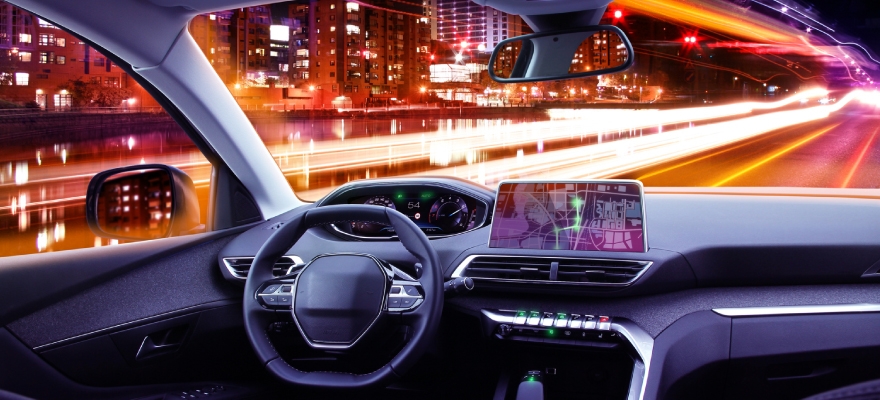Evolving In-Car Spaces
2024-09-20
- Mobility
- Product introduction
How Advances in Materials Are Creating Unique and Comfortable Interiors for Next-Generation Mobility.

The use of lighting in living rooms and car interiors has many benefits, including visual appeal, emotional impact, and improved safety. Similarly, the sense of touch (tactile sense) has a significant impact on comfort. By combining both light and touch, interior spaces become more attractive and comfortable. As technology advances, the demand for these features continues to increase.
Trends in Lighting and Materials for Car Interiors
Let's explore how lighting effects and tactile materials have evolved in automotive interiors.

Pre-Millennium Trends
In the 1980s and 1990s, the use of lighting in car interiors began to gain attention. At the time, the main objective was to illuminate the dashboard instruments and radio clocks with red, blue, and green lights to improve visibility at night. Additionally, the materials used for seats, dashboards, and door trims were chosen for their durability and functionality.


Trends in the 2000s
In the 2000s, the rapid advancement of LED technology significantly increased the flexibility of interior lighting. This period saw the introduction of reading lights and lights with a wide range of color variations. At the same time, the tactile feel of indoor materials changed, with softer and more pleasant-to-touch materials being adopted. Additionally, the buttons and seams on control panels disappeared, giving way to flat designs.

Trends Since 2020
Since 2020, intelligent lighting that automatically adjusts according to the interior and external environment, as well as dynamic lighting effects using projection technology, have been introduced. Additionally, seats with temperature control functions and interiors made with antibacterial materials have been developed, providing a more comfortable and safe driving experience.
Achieving Tactile Comfort and Seamless Design with Translucent Foam in Interior Spaces
Sekisui proposes light-transmitting laminated products that enable seamless design by using cushion materials made from translucent foam. This technology maintains cushioning properties while adding lighting and display functions to typically inorganic parts such as center consoles, armrests, and door trims.

Furthermore, by combining our capacitive touch sensors and haptic sensors, it is possible to achieve a seamless design between the interior and the Human-Machine Interface (HMI).
Please try our products and experience the next generation of in-car spaces.

Find more information
Translucent Foam Panel at Automotive Engineering Exposition 2024

